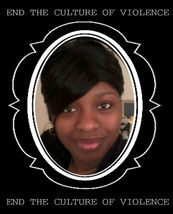Hope for Recovery
Published 4:59 pm Thursday, December 27, 2012

- Hope for Recovery
Recently, a woman named Ada Nelson Berard was stabbed seven times by her husband. In her honor, a memorial is being held on January 5, 2013, in Bunk Johnson Plaza. This brutal crime has caused an outpour of support from her family and friends wishing to call attention to domestic violence and to take a stand against our culture of violence.
Reflecting on this tragedy has reminded me of a book I read by Judith Hermann entitled “Trauma and Recovery.” Her work has greatly informed my own understanding of violence and has inspired me to share my own insights into a cultural phenomenon that is deeply effecting our community.
Violence happens all the time, everywhere, and to lots of different people all over the world. It works by dissolving connections between individuals and society. The experience of that traumatic event comes to define a new reality for the person who endured it. On one hand, if you’ve seen something terrible, you want to never think about it again. On the other hand, you want to tell the truth about what you’ve seen so that the perpetrator can be brought to justice. This inner conflict resulting from violence explains many of the reasons why violence is so difficult to address, understand, and resolve. As a result, many victims to not fully recover and many perpetrators are not held accountable.
Understand that for a victim, the trauma has affected his/her ability to accurately remember the traumatic events. The brain automatically does this to protect itself from the overwhelming anxiety and pain caused by upsetting events. That’s why its so important to have a witness advocate for the victim when s/he is unable to speak for him/herself. Unfortunately, many people choose to flee the scene of a crime rather than sticking around to help the victim because, well simply put, its easier to just pretend nothing happened.
Bystanders play a crucial role in resolving the violence because the victim is unable to fend for him/herself. People often have such a hard time recovering from trauma because they often are blamed for the crime instead of the perpetrator. Women who are harassed “asked for it.” Men who went to war “can’t handle it.” Those who couldn’t leave for Katrina “were too lazy.” The truth is that it is easy, REALLY easy, to blame the victim. If you witness a crime, it is much easier to simply walk away than to actually share the burden of pain. Siding with the perpetrator is very easy, as it requires the bystander to do nothing: to see, hear, speak no evil. The victim, meanwhile, actually asks something of the bystander: to bear witness; to share the stigma of victimhood and to bring private crimes into the public view.
Whether you’ve endured a concentration camp run by tyrants or are the survivor of a small prison created by tyrants who rule their homes, your experience of trauma is the same. You lose your power. You become overwhelmed by the terror of something or someone more powerful than you who is not on your side. This sense of helplessness characterizes the victim experience. Trauma interrupts one’s sense of safety and often causes a person to shut down in the face of unbearable pain.
One’s sense of personal power is the basis for social and political life. Living in a society that is exposed to violence and terror on a daily basis has created a culture of trauma in which a significant portion of the population is silent and disconnected from themselves as people capable of affecting their environment. One in four women have been raped, according to a study of sexual violence by Diana Russel in the 1980s. Moreover, one in three adults suffered abuse as children. The global configuration of power has sent many men and women home with post traumatic stress disorder. The chronic violence within our communities, depicted in the language we use and accept into our homes through television… all of these factors are stripping people of their power.
So can we do as a community and as individuals to help survivors and break the cycle of violence?
The best and most effective way to get one’s sense of power back is through participation in creative tasks. Whether it be painting, sculpting, musical performance, theater, dance, writing, knitting, beading, or pottery, all are invaluable to those struggling to reconnect. Sports can be another huge empowerment tool because games are interactive and require players to focus on the present moment. Martial arts can be a valuable tool in reconnecting and establishing boundaries for both men and women as it provides a safe space to engage in aggressive creative activity. It’s a fantastic outlet for anyone seeking to release pent up anger, get in shape, and learn how to take care of their own bodies.
Recovery is a complex process for a trauma victim and is different for everyone. If your friend or family member has recently endured a traumatic events, patience and support is necessary for them to be able to tell their story, and to retell it until they can separate their feeling of powerlessness with the reality of themselves as whole people capable of thriving.
As a society, we play the role of “bystanders.” It is our choice whether we take the side of the victim or the criminal in choosing to bring the perpetrators of violence to responsibility. I humbly suggest that the answer is NOT to pretend nothing happened. We need to work together and protect our families and loved ones from this destructive and divisive force.





